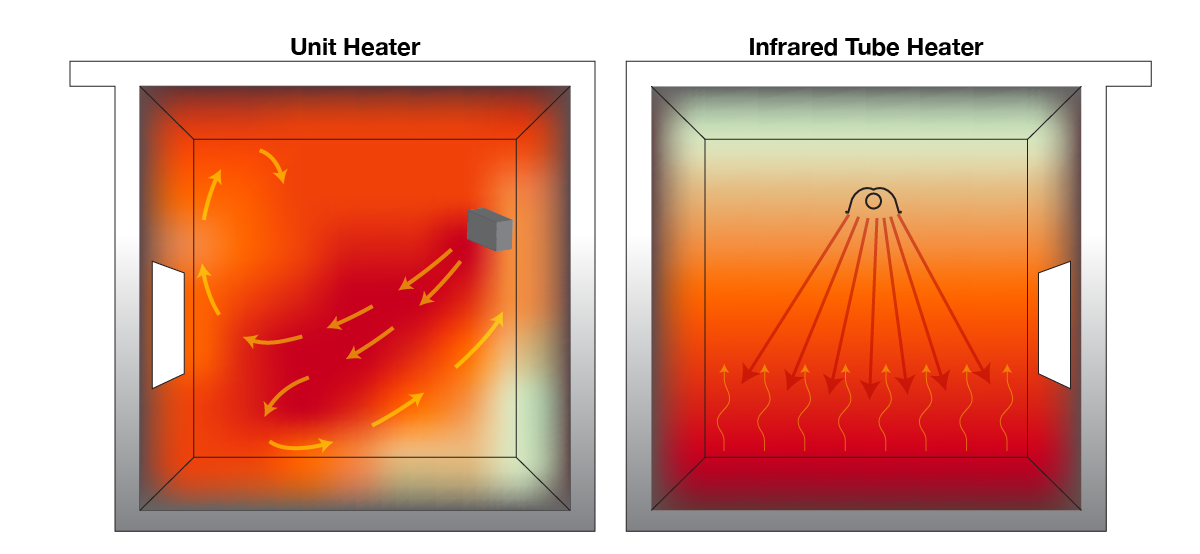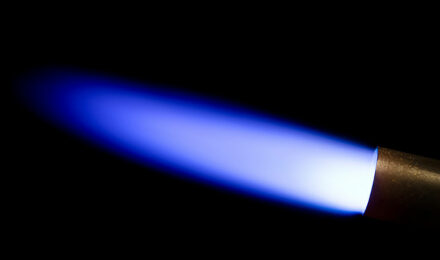While tube heaters are a very effective means of heating a space, proper application is important to optimize the performance of this heating option.
Infrared heat works well when the floor mass is heated directly. The floor mass is charged with heat energy and the energy is then distributed within the building by warm convection air flowing up from the floor. As a result, comfort levels are achieved at a lower ambient temperature. Thermostats for tube heaters can, therefore, be set at a lower temperature than warm air systems, to achieve the same comfort level.
When installing a tube heater, mounting it in the horizontal position will yield the best performance. This is the most effective orientation to deliver infrared energy to the floor. Of equal importance, is ensuring that heat is being directed properly to the heat loss areas of the building. It is good practice to place the heater out from the walls an equal distance to the mounting height. Accessories, such as side shields, are utilized when the heater must be located along a wall.
Heaters should be placed near the cold parts of the buildings. Placing heaters near large doors, outside walls, or drafty areas is the best practice. When the heat is applied correctly to these heat loss areas, the core of the building will be maintained at the desired comfort level. In cases where multiple heaters are used, it is good practice to have thermostats that control heaters individually, to help maintain uniform temperatures throughout the structure.
Avoid tilting the heater to distribute the heat. Although the heaters are approved for angled installations, horizontal mounting is recommended to optimize energy conversion to infrared. It is best to consider side shields rather than tilting. For best results, consult with us for best application practices.



